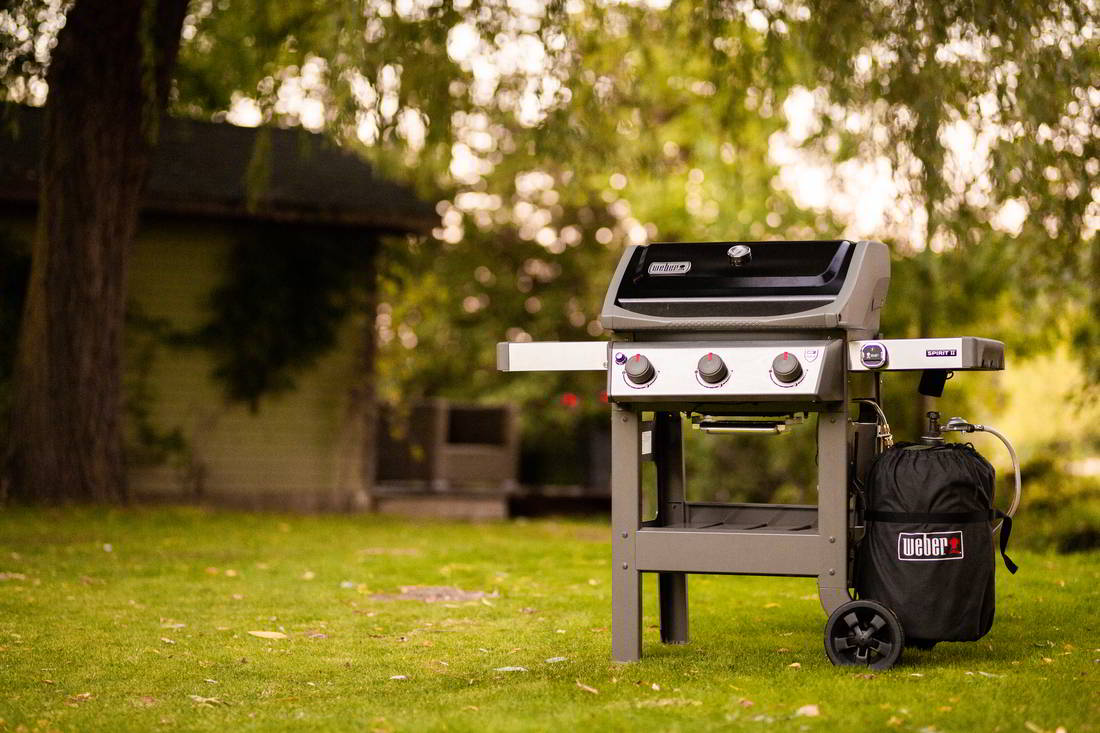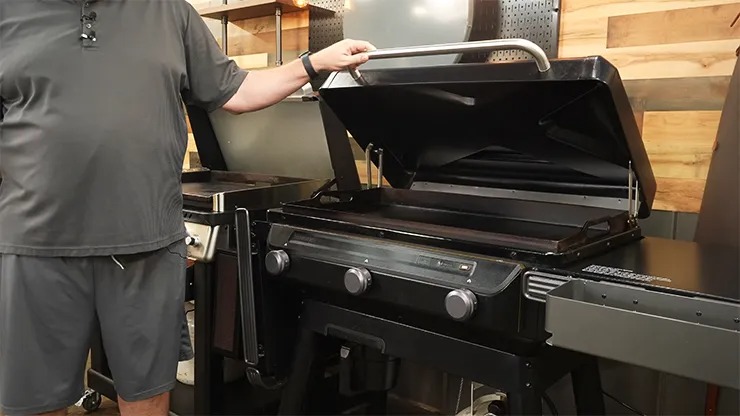When it comes to the art of grilling, few dishes are as rewarding and delicious as grilled salmon. Not only is salmon a versatile and nutrient-rich fish, but it also takes on a delightful smoky flavor when cooked on a gas grill. Whether you are a beginner or a seasoned grilling enthusiast, this comprehensive guide on how to cook salmon on a gas grill will steer you through each step to achieve that perfect char.
:max_bytes(150000):strip_icc()/Web_4000-sea-product-weber-spirit-ii-e-310-3-burner-rkilgore-45-71a7b6f74de047bcbb5e65bcca5c432a.jpg)
Why Choose Salmon?
Salmon is renowned for being a powerhouse of nutrients including omega-3 fatty acids, high-quality protein, and essential vitamins and minerals. Its rich and succulent texture makes it perfect for grilling. Furthermore, grilling salmon on a gas grill is an easy cooking method that locks in its natural flavors while giving it that sought-after smoky taste. In this article, we will delve into everything you need to know about how to cook salmon on a gas grill, making the process enjoyable and rewarding.

Essential Tools and Equipment
Before diving into the step-by-step process, it’s crucial to gather all the necessary tools and equipment. Having the right tools not only makes the cooking process smoother but also ensures the best outcome. Here are the items you’ll need, including a few recommendations with links:
- Gas Grill: Ensure your grill is clean and well-maintained. Finding the right gas grill
- Knife: A sharp knife is essential for cutting your salmon fillets. Check out this article on what size fillet knife for salmon.
- Cutting Board: A sturdy cutting board for prepping your salmon. Here’s why you should consider a Serbian chef knife for precision cutting.
- Cookware Cleaner: Maintaining your grill and other tools is crucial. Learn to clean and season your cookware effectively.

Ingredients for Grilled Salmon
Now that you have all your tools ready, let’s gather the ingredients you’ll need for a delectable grilled salmon. This recipe focuses on simplicity, allowing the natural flavors of the salmon to shine.
- 4 salmon fillets, skin-on
- 2 tablespoons olive oil
- Salt and pepper to taste
- 1 lemon, sliced
- Fresh herbs (such as dill or parsley) for garnish

Preparation Steps
The preparation process is crucial for ensuring that your salmon cooks evenly and absorbs the delicious flavors you’re about to infuse. Follow these steps carefully:
1. Preheat the Gas Grill
Before placing your salmon on the grill, preheat your gas grill to medium-high heat. This typically means setting the temperature to around 375-400F. Preheating ensures that your salmon cooks quickly and evenly, avoiding the risk of drying it out.
2. Prepare the Fillets
Rinse your salmon fillets under cold water and pat them dry with paper towels. Removing excess moisture helps the seasoning adhere better. Place the fillets on your cutting board and lightly coat them with olive oil. Season generously with salt and pepper on both sides.
3. Oil the Grill Grates
Using a grill brush or a folded paper towel dipped in vegetable oil, carefully oil the grill grates. This prevents the salmon from sticking and makes for easier flipping. Be sure to do this just before placing the fish on the grill.
4. Grilling the Salmon
Place the salmon fillets on the grill skin-side down. This helps protect the delicate flesh from direct heat and makes for easier flipping. Close the grill lid and let the fillets cook for about 4-6 minutes per side, depending on the thickness of the fillets. Use a spatula to carefully flip the salmon halfway through the cooking time. Your salmon is ready when it flakes easily with a fork and reaches an internal temperature of 145F.
5. Adding Flavor
While the salmon cooks, you can enhance the flavor by placing lemon slices on the fillets. The heat will release the lemon’s juice and aromas, infusing the salmon with a fresh, citrusy taste. Fresh herbs such as dill or parsley can also be added towards the end for an extra burst of flavor.
6. Resting the Salmon
Once the salmon is cooked to perfection, use a spatula to carefully transfer it to a plate. Let the salmon rest for a few minutes to allow the juices to redistribute. This ensures that every bite is tender and moist.
Serving Suggestions
Grilled salmon is incredibly versatile and pairs well with a variety of sides and sauces. Here are a few serving suggestions to elevate your meal:
1. Fresh Salad
A fresh and vibrant salad is an excellent accompaniment to grilled salmon. Consider a mix of leafy greens, cherry tomatoes, cucumbers, and red onions, dressed with a light vinaigrette.
2. Grilled Vegetables
Take advantage of your preheated grill and cook some vegetables alongside your salmon. Asparagus, bell peppers, and zucchini make for a colorful and healthy side dish.
3. Rice or Quinoa
Serve your grilled salmon over a bed of fluffy rice or quinoa. These grains absorb the lovely juices from the salmon and provide a wholesome base for your meal.
4. Sauces and Condiments
A variety of sauces can complement the flavors of grilled salmon. Consider a homemade dill sauce, a zesty mango salsa, or a tangy soy-ginger glaze to drizzle over your fillets.
For more ideas on sauces and condiments, check out this helpful guide on how to sharpen a chef knife – because a sharp knife makes all the difference when preparing your ingredients.
Storing and Reheating Leftovers
If you have any leftover grilled salmon, you can store it in an airtight container in the refrigerator for up to 3 days. To reheat, place the salmon in a preheated oven at 275F for about 15 minutes, or until warmed through. Alternatively, you can flake the salmon and add it to salads, sandwiches, or pasta dishes for a quick and delicious meal.
Conclusion
Cooking salmon on a gas grill is a delightful experience that yields a flavorful and nutritious dish. By following the steps outlined in this comprehensive guide on how to cook salmon on a gas grill, you can achieve perfectly grilled salmon every time. Remember to experiment with different seasonings and side dishes to find your favorite combinations. With practice and patience, you’ll become a master of grilling salmon on your gas grill.
For more tips and recipes, be sure to explore other articles on our site like how to sharpen a Rapala fillet knife to ensure your knives are always ready for the next culinary adventure.
As an Amazon Associate, I earn from qualifying purchases.


